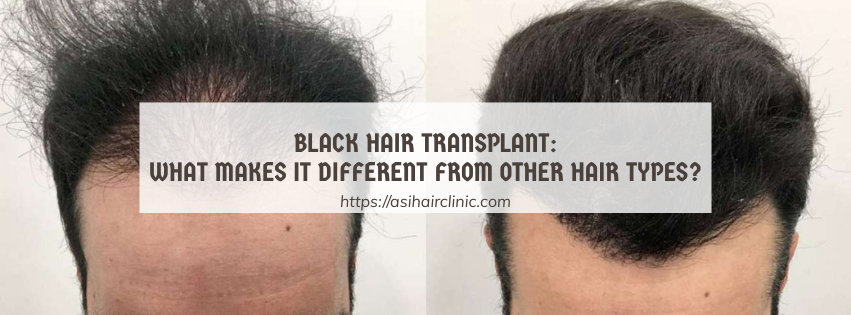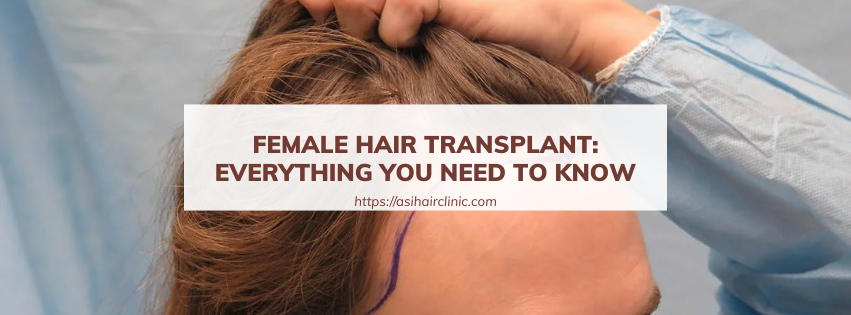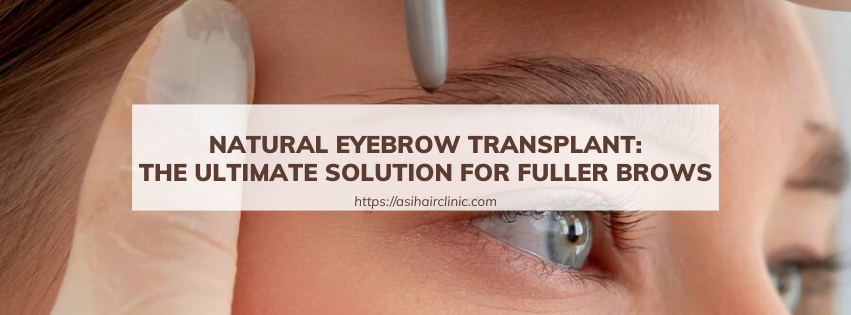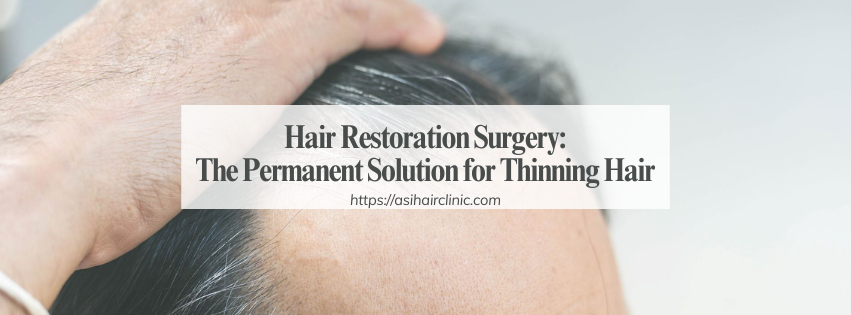Exploring the Future of Hair Restoration: Techniques and Innovations
Hair restoration has become a significant topic in modern cosmetic procedures, catering to individuals who face hair loss due to various reasons such as genetics, hormonal changes, or environmental factors. With advancements in medical technology and techniques, there are now several effective options available for those looking to regain their hair and confidence.
1. Introduction to Modern Hair Transplant Methods
In recent years, hair transplant procedures have gained immense popularity. More individuals are seeking solutions that not only restore their appearance but also enhance their self-esteem. The advent of modern methods has brought about a revolution in the field of hair restoration, making it more efficient and accessible than ever before.
Hair loss can be distressing, and the psychological impact is often overlooked. As people increasingly prioritize their image and public perception, the demand for effective hair restoration solutions continues to grow. This surge in interest has led to the development of various advanced techniques, ensuring that patients receive tailored solutions that meet their specific needs.
As we delve into the world of hair restoration, we will explore the evolution of methods, the gold standards of hair transplants, the technologies shaping the future of this field, and considerations related to cost and accessibility.
1.1. Why Hair Transplants Are a Popular Choice for Hair Loss
The popularity of hair transplants can be attributed to several factors. First and foremost, they offer a permanent solution to hair loss. Unlike topical treatments and medications that may require ongoing use, hair transplants involve relocating healthy hair follicles from one part of the body to the balding or thinning areas. Once transplanted, these follicles continue to grow hair naturally, providing patients with a long-term solution.
Moreover, the results of modern hair transplants are remarkably natural-looking. With advanced techniques, surgeons can create hairlines and density that mimic the patient’s original hair pattern, leading to outcomes that are both aesthetically pleasing and satisfying. Patients often report significant boosts in confidence following successful procedures, reinforcing the mental health benefits associated with regaining a full head of hair.
Additionally, hair transplants have become more socially accepted. As celebrities and public figures openly share their experiences with hair restoration, societal stigma surrounding these procedures diminishes. This visibility encourages more individuals to explore their options without fear of judgment, contributing to the growing trend of hair restoration.
1.2. The Evolution of Hair Restoration Techniques
The field of hair restoration has undergone remarkable transformations over the years. The earliest methods were rudimentary, often resulting in unnatural appearances. However, advances in surgical techniques and understanding of hair biology have paved the way for more refined practices.
Historically, hair transplants began with the punch grafting technique, which involved extracting small circular sections of hair and skin from donor sites. While this method showed promise, it was limited by its aesthetic output, often leaving patients with a “pluggy” appearance.
Over time, techniques evolved into more sophisticated methods that prioritized patient comfort and visual outcomes. The introduction of Follicular Unit Transplantation (FUT) and Follicular Unit Extraction (FUE) marked significant advances in the field, providing greater precision and improved recovery times. As technology progressed, minimally invasive options gained traction, offering patients reduced downtime and less scarring.
Newer techniques, such as Direct Hair Implantation (DHI), have further transformed hair restoration. These methods enable surgeons to transplant hair follicles directly into the recipient area without the need for incisions, resulting in faster healing and minimal discomfort. As we move forward, continued innovation in hair restoration techniques promises even better outcomes for patients.
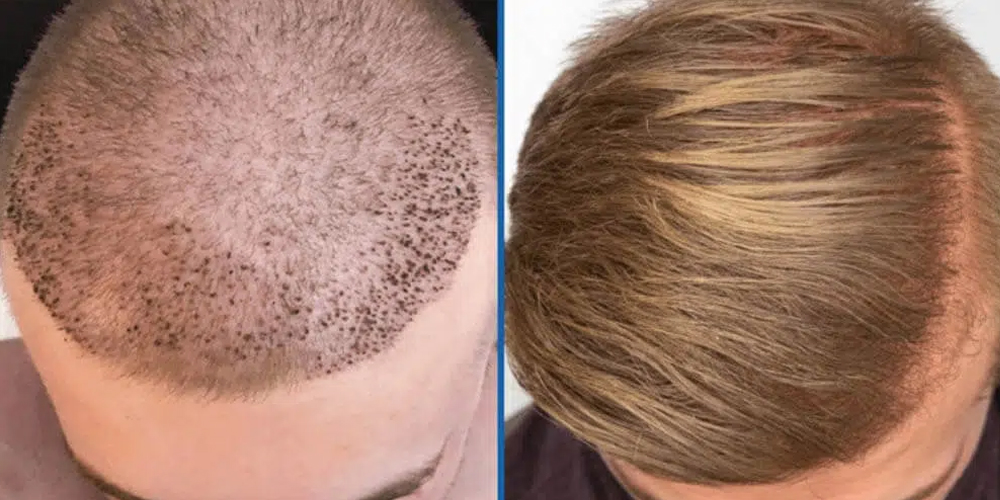
2. The Gold Standards of Hair Transplants
Modern hair transplants have established several gold standard techniques, each with its unique advantages. Understanding these methods allows individuals to make informed decisions about their hair restoration journey.
These methods have been refined through years of practice, research, and technological advancements. Each technique focuses on minimizing trauma to the scalp while maximizing the chances of successful hair growth.
2.1. FUE Hair Transplant
Follicular Unit Extraction, or FUE, is one of the most popular hair transplant techniques today. This method involves harvesting individual hair follicles directly from the donor site-usually the back of the head-and implanting them into the areas suffering from hair loss.
One of the main advantages of FUE is its minimally invasive nature. Unlike traditional methods that require sutures, FUE leaves tiny, dot-like scars that are hardly noticeable once healed. This makes it an appealing option for those who prefer shorter hairstyles or want to avoid visible scarring.
Patients typically experience less pain and faster recovery times compared to older methods. The process can take several hours, depending on the number of follicles being transplanted, but many report returning to normal activities within just a few days.
However, FUE isn’t devoid of challenges. The extraction process is meticulous and requires a skilled surgeon to ensure the quality of harvested follicles. Additionally, its costs can be higher than other methods due to the labor-intensive nature of the procedure.
2.2. FUT Hair Transplant
Follicular Unit Transplantation, commonly known as FUT, is another well-established method of hair restoration. In this technique, a strip of tissue containing hair follicles is surgically removed from the donor area. The strip is then dissected into individual follicular units, which are subsequently implanted into the thinning or balding areas.
FUT is often praised for its ability to harvest a larger number of follicles in a single session, making it suitable for individuals requiring significant coverage. The technique can deliver dense results, as the strip method allows for more follicles to be extracted in one go.
However, FUT comes with its set of drawbacks. The linear scar left behind after the strip is removed may be more apparent, particularly if the patient opts for short hairstyles. The recovery time might also be longer, as the incision site requires proper care to heal effectively.
Despite these considerations, FUT remains a highly effective option, especially for those seeking substantial hair restoration with focused, denser results.
2.3. DHI Hair Transplant
Direct Hair Implantation (DHI) is viewed as one of the most innovative hair transplant techniques available today. This method combines the principles of FUE with advanced implantation processes.
In DHI, hair follicles are extracted similarly to FUE; however, instead of creating recipient sites beforehand, the surgeon uses a specialized tool called a Choi Implanter to place the hair follicles directly into the scalp. This approach allows for greater control over the angle, direction, and depth of the transplanted hair, leading to more natural results.
The primary advantage of DHI is its efficiency. Since the follicles spend less time outside of the body during the procedure, the likelihood of viability increases. Furthermore, patients benefit from reduced trauma to the scalp, resulting in faster healing times and minimized discomfort.
While DHI offers promising results, it also tends to be more expensive compared to traditional methods. The need for high levels of expertise and precision adds complexity to the procedure, potentially leading to increased costs.
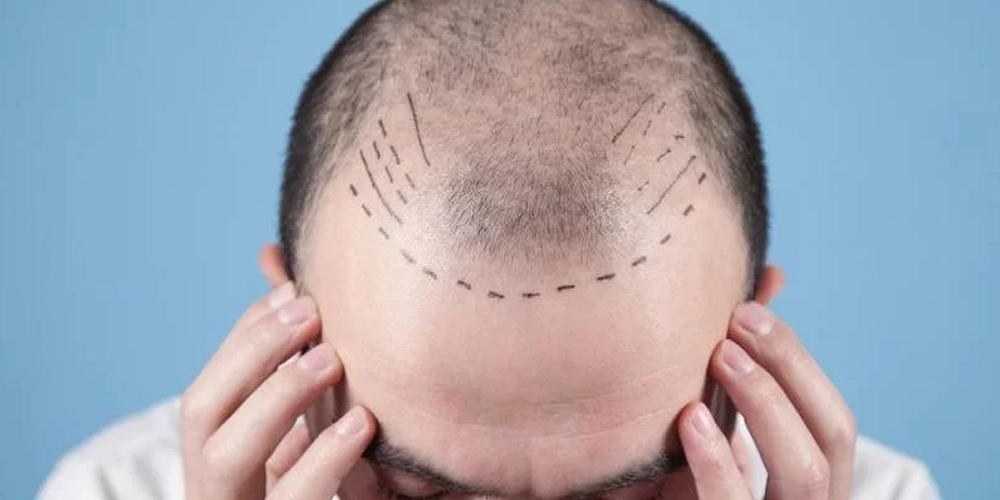
3. Advanced Technologies in Hair Restoration
As technology continues to advance, the realm of hair restoration is witnessing groundbreaking innovations that improve the efficacy and safety of hair transplant procedures. These developments not only enhance patient satisfaction but also pave the way for new possibilities in hair restoration.
Among the most prominent technologies influencing hair restoration is robotic-assisted surgery. The integration of robotics into hair transplant techniques ensures precision and consistency, providing surgeons with cutting-edge tools that streamline the process.
ARTAS iX Robotic Hair Transplant
The ARTAS iX Robotic Hair Transplant system represents the forefront of technological advancement in hair restoration. This state-of-the-art system utilizes artificial intelligence and robotics to assist surgeons in performing FUE hair transplants with unparalleled accuracy.
By leveraging advanced imaging and mapping technology, the ARTAS system identifies the best candidate hair follicles, allowing for efficient extraction without damaging surrounding tissues. This precision minimizes scalp trauma and optimizes follicle viability, resulting in stronger outcomes for patients.
Furthermore, the ARTAS iX provides a level of customization that traditional methods cannot match. Surgeons can tailor the procedure based on the patient's unique hair characteristics and desired results, leading to more personalized care.
Although the ARTAS system enhances the overall experience for both patients and surgeons, it also introduces additional costs. The investment in robotic technology might lead to higher procedure fees, though many patients find the value worth the expense given the potential for superior results.
4. Comparing Hair Transplant Techniques
With various hair transplant techniques available, individuals must discern which option aligns best with their goals and circumstances. Each method possesses distinct features that cater to different needs, requiring thoughtful consideration.
Understanding the nuances between these techniques aids in making an informed choice regarding hair restoration options.
4.1. FUE vs. FUT: Which One is Better?
Choosing between FUE and FUT can be a difficult decision for individuals dealing with hair loss. Both methods are effective, yet they differ significantly in execution and resulting outcomes.
FUE is celebrated for its minimally invasive approach, allowing for quicker recovery times and less visible scarring. Patients often appreciate the ability to wear short hairstyles post-procedure without concerns about a linear scar.
Conversely, FUT may present a better option for individuals with extensive hair loss requiring a larger number of follicles. Its capacity to extract dense grafts in one session can save time for patients needing significant coverage. However, the linear scar can be a deterrent for some, particularly those wishing to maintain short hair.
Ultimately, the decision hinges on personal preferences, lifestyle considerations, and the specific advice of a qualified surgeon. An in-depth consultation can help clarify which method best aligns with individual needs and expectations.
4.2. DHI vs. FUE: Key Differences and Similarities
Both DHI and FUE represent advancements in hair transplantation, each boasting unique benefits that cater to diverse patient requirements.
The primary difference lies in the implantation process. While FUE requires the creation of recipient sites before placing the hair follicles, DHI allows for simultaneous extraction and implantation. This difference permits greater control over the placement of each follicle, enhancing the natural look of the results.
Another critical distinction relates to healing times. DHI's direct implantation technique tends to result in faster recovery, minimizing patient discomfort and downtime. Conversely, FUE might necessitate a slightly longer healing period due to the initial puncture wounds in the scalp.
Despite these differences, both methods share fundamental similarities. They both rely on the principle of transporting healthy hair follicles from donor areas to balding regions, aiming for natural-looking results. Ultimately, the choice between DHI and FUE depends on individual priorities and the advice of a qualified practitioner.
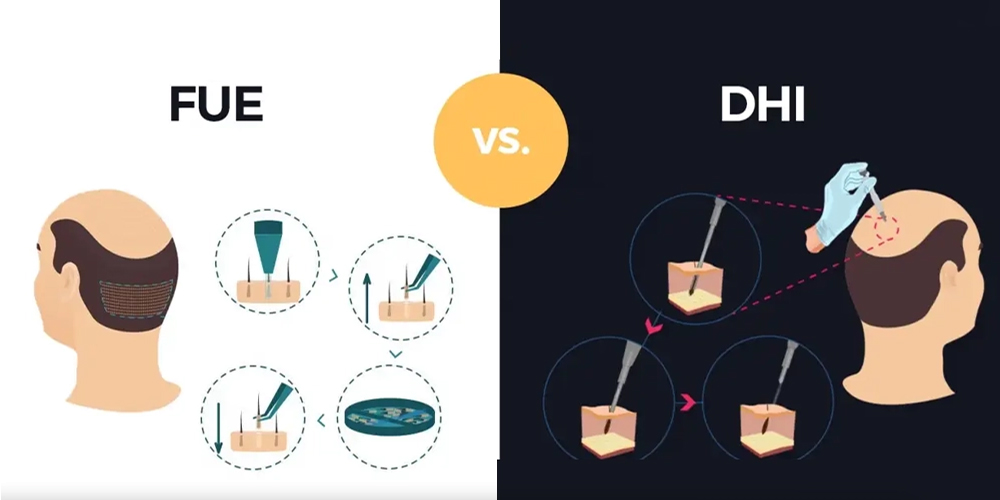
5. Cost and Accessibility of Hair Transplants
As the demand for hair restoration grows, so too does the conversation surrounding cost and accessibility. Understanding the financial implications of hair transplant procedures is crucial for those considering their options.
While various techniques vary in price, the overall cost is influenced by multiple factors, including the extent of hair loss, the chosen method, surgeon's expertise, and geographical location.
5.1. Factors Influencing Hair Transplant Costs
The cost of hair transplants can vary widely based on several factors. Initially, the type of procedure selected plays a pivotal role in determining expenses. For instance, advanced methods like DHI or robotic-assisted systems may carry higher fees due to the technology and expertise required.
The extent of hair loss also influences pricing. Individuals seeking restoration for larger bald spots may require more grafts, leading to increased costs. Additionally, the surgeon's experience and the clinic's reputation can affect overall pricing. Highly skilled practitioners with proven records of successful procedures may charge premium rates.
Geographic location is another essential consideration. Clinics situated in major metropolitan areas may command higher fees compared to those in smaller towns, reflecting variations in local market demands.
5.2. Insurance Coverage for Hair Transplants
One of the barriers many individuals face when considering hair restoration is the question of insurance coverage. Typically, hair transplant procedures are considered cosmetic and thus may not be covered by health insurance plans.
However, some policies might provide coverage for hair restoration if deemed medically necessary-for example, in cases of traumatic hair loss or specific medical conditions. Patients should review their insurance policies carefully and consult with their providers to determine eligibility for coverage.
For those without insurance options, financing plans may be available at certain clinics, allowing patients to manage costs over time. These arrangements can ease the financial burden and make hair restoration more accessible to a broader audience.
Conclusion
The future of hair restoration is bright, characterized by continuous advancements in techniques and technology. As individuals increasingly seek solutions for hair loss, the industry is evolving to meet their needs, offering personalized care and promising results.
With ongoing innovation and a commitment to enhancing patient outcomes, hair restoration will continue to transform lives, restoring not just hair, but also confidence and self-esteem. Whether exploring FUE, FUT, DHI, or advanced robotic-assisted procedures, prospective patients can find hope in the possibilities that await them in the world of hair restoration.
LATEST POSTS

